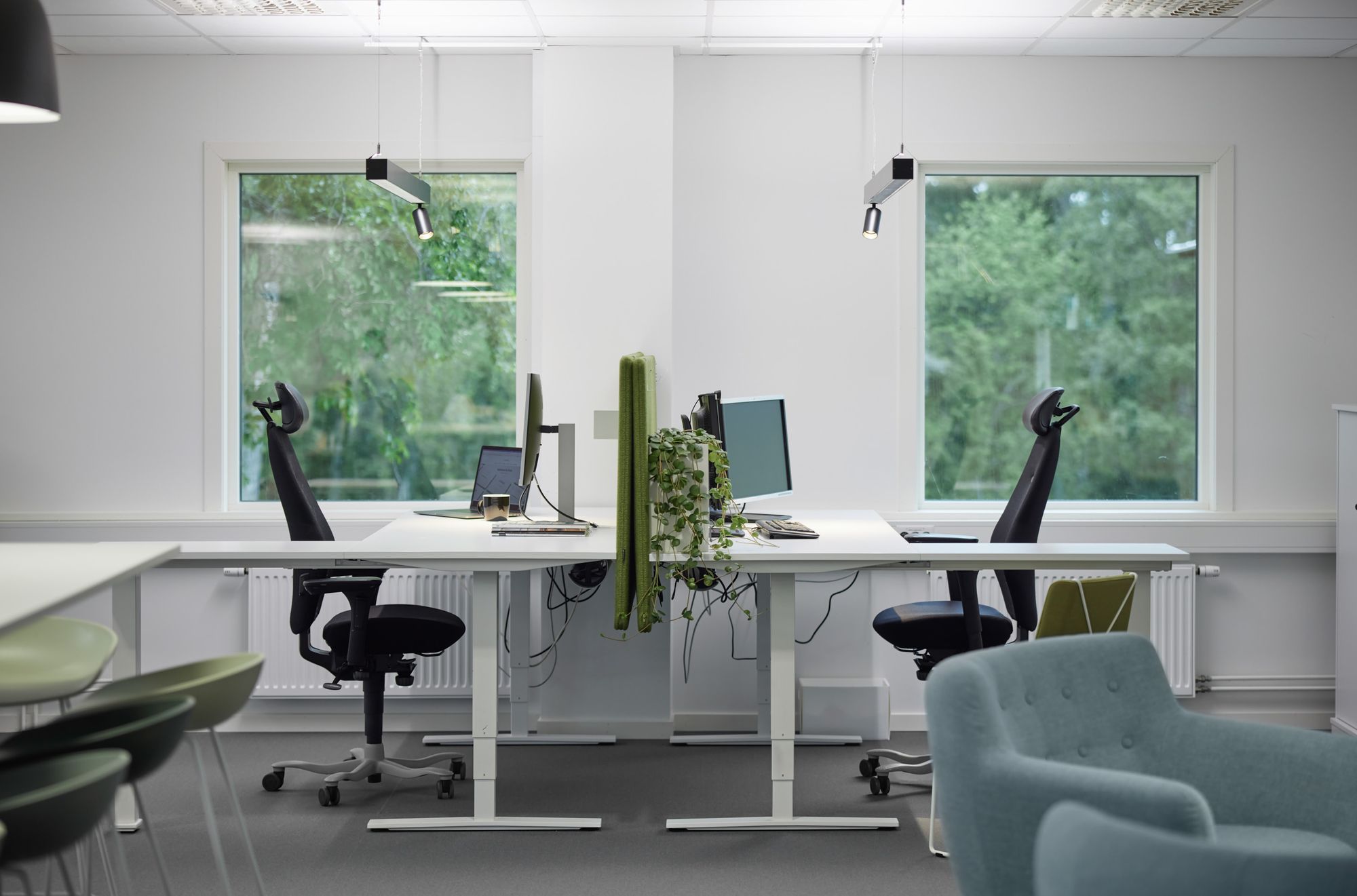Workplace lighting
The new European standard EN 12464-1 focuses on the lighting of indoor workplaces. The requirements in the standard mainly relate to the actual working area. The lighting outside of the working area shall then be adapted to the conditions that apply within the working area.

The values given refer to the lowest illuminances at the workspace or the visual object. The illuminances concern the lowest average value and are intended for work under normal conditions. The illuminance can be adjusted in the steps set out below if the vision conditions deviate from the normal conditions.
20–30–50–75–100-150–200–300–500–750–1000–1500–2000–3000–5000 lx
The requirements for illumination levels should be raised under difficult working conditions, for activities that demand high accuracy or high productivity, when visual objects have small details or low contrast, with impaired vision efficiency or when vision work is carried out over long periods.
The requirements for illuminance can be reduced for visual objects of abnormally large size and high contrast or when visual work is underway for an unusually short period of time. In the new standard there are modified illuminance values that might be suitable to use in these cases.
In workplaces with continuous work (normally more than two hours) the illuminance may not fall below 200 lux.
The recommended values presuppose that the employees have normal vision. If a sizeable number of persons have some form of vision impairment, this must be given special consideration when designing the lighting installation.
Lighting vision objects
The main principle is that the light falls in such a manner that the greatest possible contrast arises in the visual object, which may have a horizontal, vertical or sloping position. It may also consist of different surface properties. Normally you start off with a work object that is of a matt structure, but in reality different types of reflective characteristics usually occur at all types of workplaces.
A basic prerequisite for good vision comfort at a workplace is that the work object’s position and shape in relation to the direction of light does not cause any form of discomfort glare or glare that impairs vision in the form of glare from luminaires or disturbing reflections.